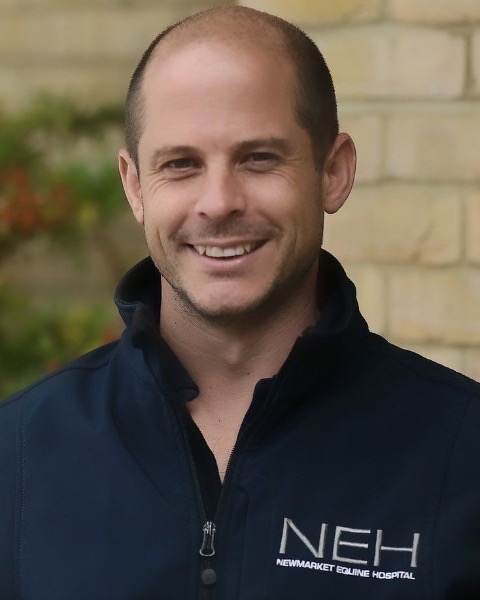Back
Large Animal
Seminar: Arthrodesis and Long Bone Fracture Repair
Is the Configuration of MTIII Medial Condylar Fractures Predictable? A UK Experience in the Racing Thoroughbred
Saturday, October 26, 2024
1:45 PM – 2:15 PM
Location: 105ab

William Barker, BVSc, MVetMed, DECVS, MRCVS
Surgeon and Director
Newmarket Equine Hospital
Newmarket, United Kingdom
Guest Speaker(s)
For the past 40 years, propagating medial condylar fractures of the third metatarsal bone (MT3) have developed notoriety for their unpredictable configuration in the mid-diaphysis, resulting in catastrophic failure postoperatively. This has resulted in various techniques for repair being adopted from conservative management, standing distal repair, open approach lag screw repair, to full buttress plating.
With the advance in imaging technology and the availability of pre-operative computed tomography (CT), is there a pattern to the configuration of medial condylar fracture propagation that would help in the understanding of bespoke/optimal fracture repair?
In a study of over 40 medial condylar fractures of the MT3, a pattern has emerged whereby medial condylar fractures rotate in a predictable nature as propagation occurs. In the mid diaphyseal region, the plantar fracture line rotates towards and into the lateral cortex, while the dorsal fracture line remains parasagittal for a greater distance before rotating more acutely into the medial cortex. Depending on the extent of propagation, the plantar fracture line then begins to turn back into the plantar cortex in the proximal third of the metatarsal bone where there is the potential for the two fracture (originally dorsal and plantar) lines to conjoin in the plantar cortex and the fracture to thus become complete in 35% of cases. The medial condyle is then effectively disunited from the parent bone and load must be transferred through a narrow, identifiable strut of dorsolateral cortex. Postoperative CT has confirmed the failure in this dorsolateral strut results in the transverse failure of the bone during the post operative period.
With the knowledge that medial condylar fractures of the MT3 have the potential to be complete, more emphasis should be made using pre-operative imaging both radiography and CT to identify these cases and manage them this adequate fixation.
With the advance in imaging technology and the availability of pre-operative computed tomography (CT), is there a pattern to the configuration of medial condylar fracture propagation that would help in the understanding of bespoke/optimal fracture repair?
In a study of over 40 medial condylar fractures of the MT3, a pattern has emerged whereby medial condylar fractures rotate in a predictable nature as propagation occurs. In the mid diaphyseal region, the plantar fracture line rotates towards and into the lateral cortex, while the dorsal fracture line remains parasagittal for a greater distance before rotating more acutely into the medial cortex. Depending on the extent of propagation, the plantar fracture line then begins to turn back into the plantar cortex in the proximal third of the metatarsal bone where there is the potential for the two fracture (originally dorsal and plantar) lines to conjoin in the plantar cortex and the fracture to thus become complete in 35% of cases. The medial condyle is then effectively disunited from the parent bone and load must be transferred through a narrow, identifiable strut of dorsolateral cortex. Postoperative CT has confirmed the failure in this dorsolateral strut results in the transverse failure of the bone during the post operative period.
With the knowledge that medial condylar fractures of the MT3 have the potential to be complete, more emphasis should be made using pre-operative imaging both radiography and CT to identify these cases and manage them this adequate fixation.

